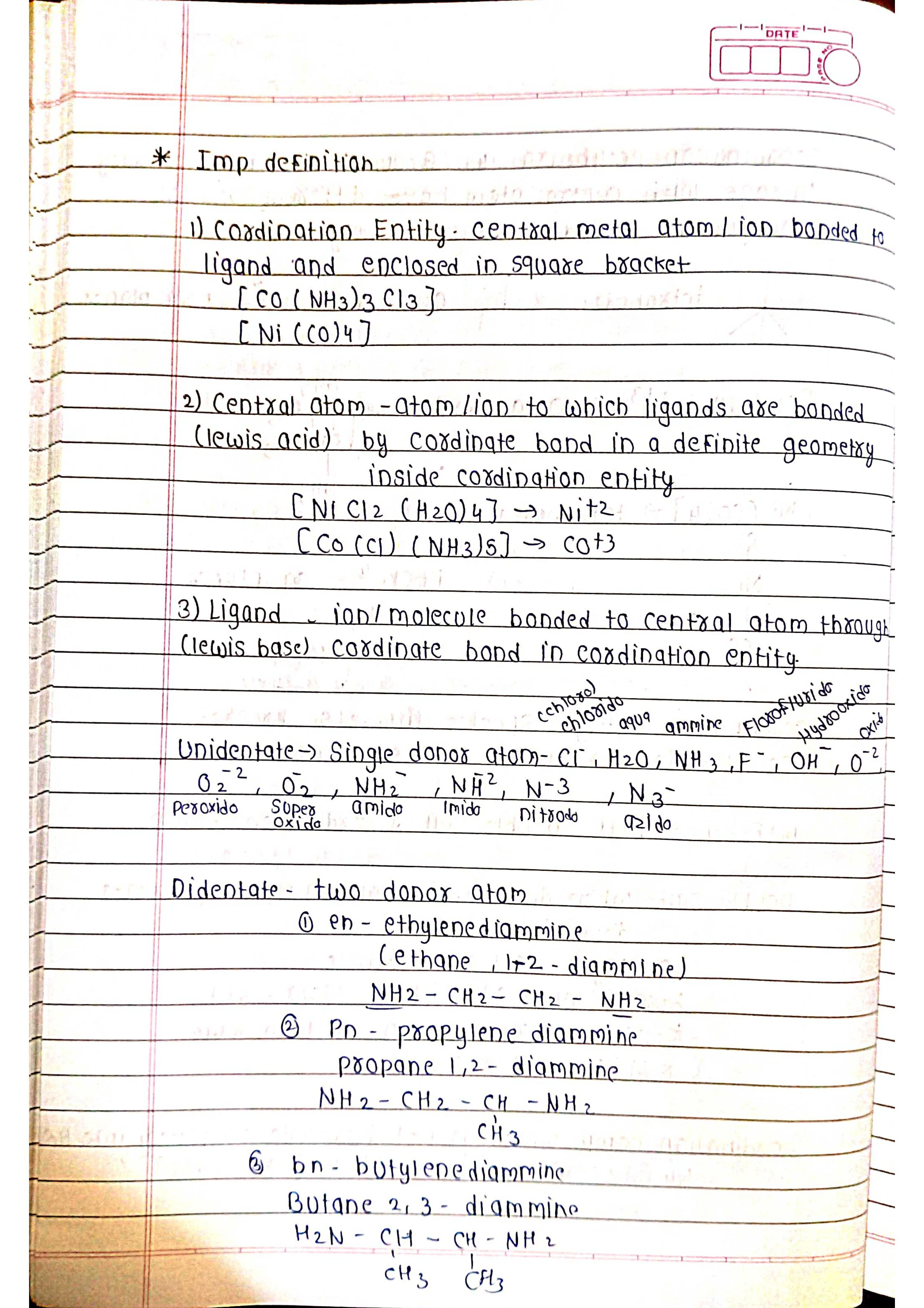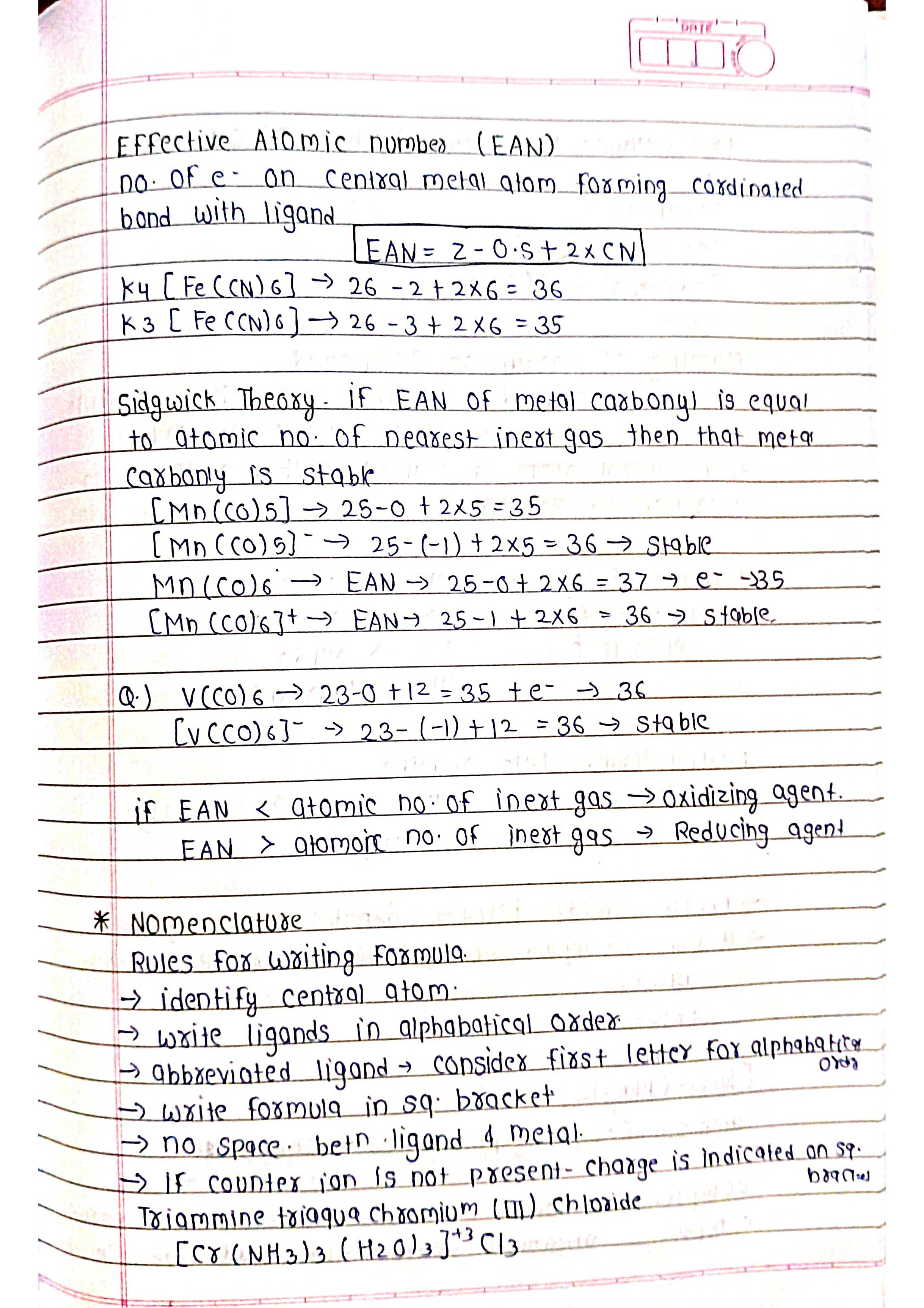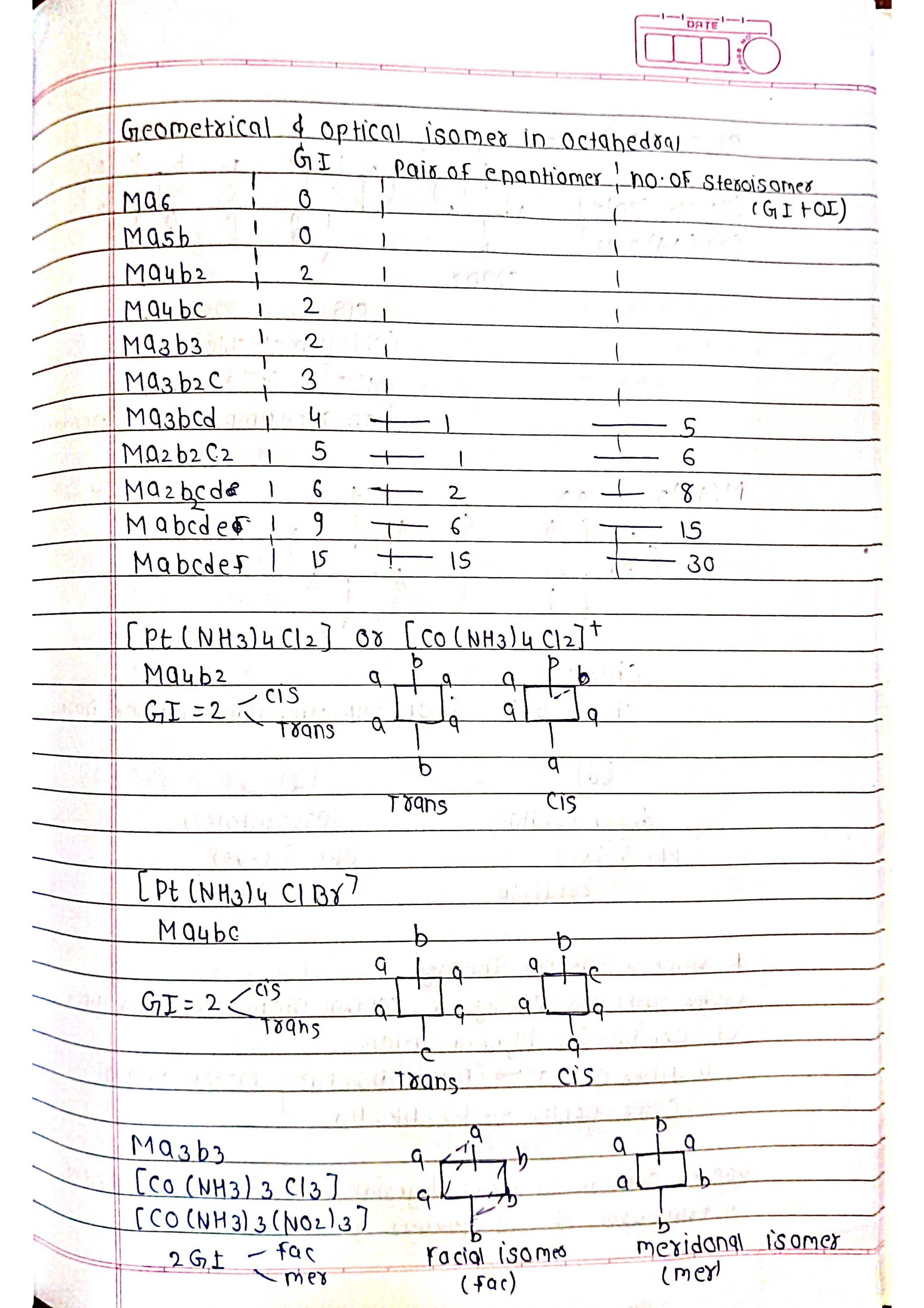Coordination compounds are addition molecular compounds which retain their identity in solid state as well as in dissolved state. In these compounds, the central metal atom or ion is linked by ions or molecules with coordinate bonds. Some examples of coordination compounds include potassium ferrocyanide, K4[Fe(CN)6], and Mohr’s salt, [FeSO4·(NH4)2SO4·6H2O].
Key Features of Coordination Compounds
➡️ Central atom or ion: The atom or ion to which a fixed number of ions or groups are bound is called the central atom or ion. It is also referred to as a Lewis acid.
➡️ Ligands: Ligands are electron donating species (ions or molecules) bound to the central atom in the coordination entity. They can be charged or neutral.
➡️ Coordination number: The coordination number is defined as the number of coordinate bonds formed by the central metal atom with the ligands.
➡️ Coordination sphere: The central ion and the ligands attached to it are enclosed in square brackets, which is known as the coordination sphere. The ionizable group written outside the bracket is known as the counter ions.
Types of Coordination Compounds
➡️ Homoleptic complexes: Complexes in which the metal atom or ion is linked to only one kind of donor atoms are called homoleptic complexes. For example, [Co(NH3)6]3+.
➡️ Heteroleptic complexes: Complexes in which the metal atom or ion is linked to more than one kind of donor atoms are called heteroleptic complexes. For example, [Co(NH3)4Cl2]+.
Importance and Applications of Coordination Compounds
Coordination compounds have a wide range of applications in various fields, including:
➭ Qualitative and quantitative analysis.
➭ Purification of metals.
➭ Hardness determination of metals.
➭ Biological systems.
➭ Catalysis in industrial processes.
➭ Medicinal chemistry.




















